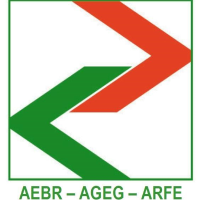Association of European Border Regions
 | |
| Abbreviation | AEBR |
| Formation | 1971 |
| Headquarters | Gronau, Germany |
| Leader | Association of European Border Regions/President |
| Subpage | •Association of European Border Regions/President |
| Organization of European regions, working to weaken national states, to the advantage of smaller regions and the larger EU superstructure. Presidents of the organization have a heavy Bilderberg habit. | |
The Association of European Border Regions (AEBR) is an organization of European regions and deals with cross-border cooperation in Europe[1]. The organization particularly works to promote cross-bored structures, projects and programs. The implicit intent is to weaken national states, to the advantage of smaller regions and the larger EU superstructure.
Presidents of the organization have a heavy Bilderberg habit.
Europe of the regions
The European Union regionalism project has normative as well as empirical elements – it says what ought to happen as well as what will happen – and its normative origins pre-date its contemporary usage in advocating European integration.[2]
It presents a benign vision of regions and regionalism replacing or displacing nation states and nationalism. Strong versions proclaim the 'death of the nation state' and the 'end of territorially based sovereignty', while in weaker versions such ideas are only implicit, or the decline of states in favour of regions is seen as a relative, long-term matter. In EU circles weaker versions prevailed, not only because they are more plausible but also because the Commission's objective was to make allies in the regions rather than enemies in the states, which retained control over the general direction and pace of integration. However, the stronger version had more resonance at a popular level.[2]
In part, the 'Europe of the Regions' model was developed as an ideology of EU integration and legitimation. Its rhetoric served to overcome, minimise or obscure some of the problems involved in creating the single market after 1986, and later Economic and Monetary Union (EMU) as envisaged in the 1991 Maastricht Treaty. For example, in 1991, the Chef de Cabinet to the Regional Commissioner argued for a new Europe where regional authorities had greater political autonomy: 'The Europe of the regions is already a cultural reality and in the new European single market there will soon be an economic one. Why not turn it into a political reality too?'. The idea lent heavily on their some hig-htech regions' reputation for 'success', rather than on more typical cases.[2]
History
The first initiative to create a "union for border regions" was discussed in 1965 at the International Regional Planning Conference in Basel.[3]
In order to reach their objectives, AEBR works together at European level with:
- European Union
- Council of Europe
- Parliamentary Assembly
- Congress of the Council of Europe
- Committee of Experts on border issues